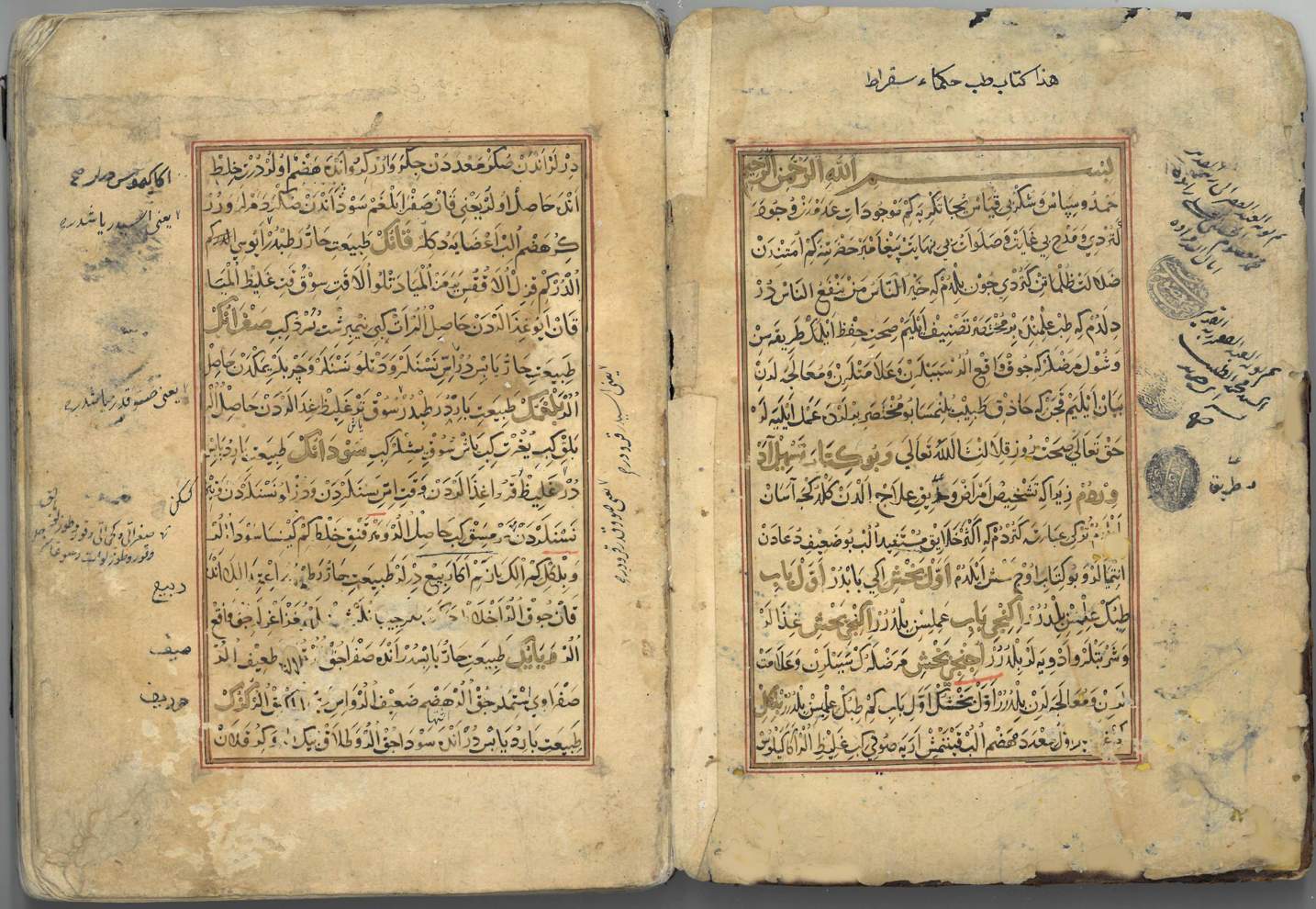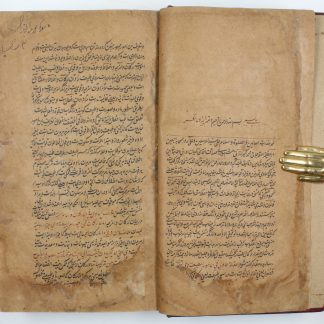Complete medical manuscript, copied during the lifetime of the author
Teshil ("Facilitation"). Ottoman medical manual.
8vo (155 x 204 mm). Ottoman manuscript on laid paper. 134 pp. on 68 ff., written space ca. 90 x 140-145 mm. 15 lines, per extensum, written in a heavily Persian-influenced naskh style in black ink, gilt ("taddib") section titles, rubricated and sometimes written in gilt for emphasis, no catchwords, but extensively vocalized Turkish text with Arabic diacritics. Gilt gadval borders around introductory double page, remainder of text within double red rules. Frequent marginalia and occasional glosses, with some prayers and charms. Early full leather binding with fore-edge flap, spine and flap hinges reinforced with later leather.
€ 58.000,00
Complete Ottoman medical manuscript, copied by the scribe Celalu'd-din Mehmud al-'Ala'i in 1408 CE, still during the lifetime of the book's author, the Anatolian religious scholar and physician Haci Pasha (known in the Arabic tradition as Haggi Basha Galalu'd-Din al-Hidr bin 'Ali bin al-Hattab al-Aydini).
The introduction (1v-2r) sets out the work's content and structure, presented, with Arabic technical terms adopted into Turkish, as a compendium ("muhtasar") and facilitation ("teshil") of medical knowledge, offering a discussion of definitions, medical practices, the administration of solids and liquids, and a description of diseases with their symptoms and related therapies. The following sections treat dietary matters including regimens for exercise ("hereket"), meals ("gazalar"), hot baths ("hammamlar") and vomiting ("istifrag"), as well as self-medication (4v-15v), fevers ("buhran", 16r-17r), and the therapeutic and prophylactic properties of various foods (17v-26r). The third and by far the most extensive section (26r-67r) provides definitions and summary descriptions of the most common ailments with their aetiologies (proceeding from symptomological analysis, "alamet") and treatments. A single final page (67v) entitled "Kitabu'l-Ihtilac" ("Book of attraction or palpitations") contains apotropaic phrases to be pronounced over the patient and a short poem in 11 couplets, followed by the four-line colophon (68r).
Haci Pasha was a famous 14th century physician from Anatolia who moved to Cairo, then the thriving capital of Mamluk Egypt, to refine his medical knowledge during what is today regarded as the beginning of the most famous period of Ottoman medicine. The present treatise enjoyed significant success for many decades and directly influenced the work of one of the most renowned Ottoman physicians of the 15th century, Serefeddin Sabuncuoglu (1385-1468), who composed the first surgical atlas in Ottoman Turkish.
Margins somewhat fingerstained in places with a light waterstain throughout, but generally very well preserved.









